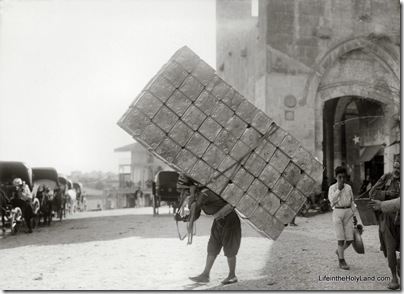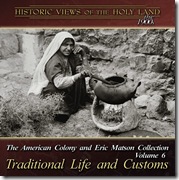I’ve been looking forward to these books by Hanan Eshel for some time. It’s risky to say without having read them, but I predict they’ll be the best books on their respective subjects. (I have spent a day with Eshel at Qumran, benefitting from his immense knowledge.) They are available from Eisenbrauns for $22.50 each. Here are direct links:
Ein Gedi: A Carta Field Guide
Masada: A Carta Field Guide
Qumran: A Carta Field Guide
This brief review was published in Haaretz.
Call of the desert
By Aya Horesh
Qumran: Scrolls, Caves, History (Qumran: Megilot, Me’arot, Historia), by Hanan Eshel
Masada: An Epic Story (Metzada: Alilot Gvura), by Hanan Eshel
Ein Gedi: Oasis and Refuge (Ein Gedi: Neveh Midbar U’mistor), by Hanan Eshel
Each of the three volumes is available from Carta Publishing in both Hebrew and English editions.
Each has 144 pages and costs NIS 84 or $25
Many travelers find it hard to deal with tour guides, who tend to think their sense of humor and cloying affability will encourage people to give bigger tips at the end of the trip. Tour guides’ explanations, too, frequently leave something to be desired. At the same time, it is fairly difficult to find travel literature of a high caliber, because why should prominent academics waste their time on writing that does not promote their scientific renown?

The three field guides that Hanan Eshel has written on Qumran, Masada and Ein Gedi are therefore a welcome contribution. Eshel, of Bar-Ilan University’s Land of Israel studies and archaeology department, is one of the most important archeologists and scholars of the Qumran scrolls. He has spent years conducting research along the west coast of the Dead Sea and has earned a worldwide reputation. His familiarity with the area, particularly with the Dead Sea Scrolls, has led to numerous books and articles that have earned him a prestigious place among scholars of ancient Israel.
Each of these three books, which Carta has published in both Hebrew and English editions, follows an identical two-part format: The introduction provides an overview of the site, describes the archaeological findings discovered there and explains their significance; that is then followed by a field guide that travelers are meant to take with them as they tour the site. This division is especially helpful for those who wish to forgo a hike in the blazing Dead Sea heat and prefer to learn about these sites in the cool confines of their air-conditioned homes. The introductions are succinct and precise, provide a good sense of each place and its importance, and are accompanied by spectacular photographs and maps.
The review continues here.
HT: Joe Lauer
UPDATE: If somebody buys the Masada book before me, let me know if the cover image is credited
to me. It sure looks familiar, but they wouldn’t possibly have used it without asking for permission…
UPDATE #2: James at Eisenbrauns notes in the comments that you can get an additional 20% discount through the end of the month using the Carta order form on this page. Thanks, James!








